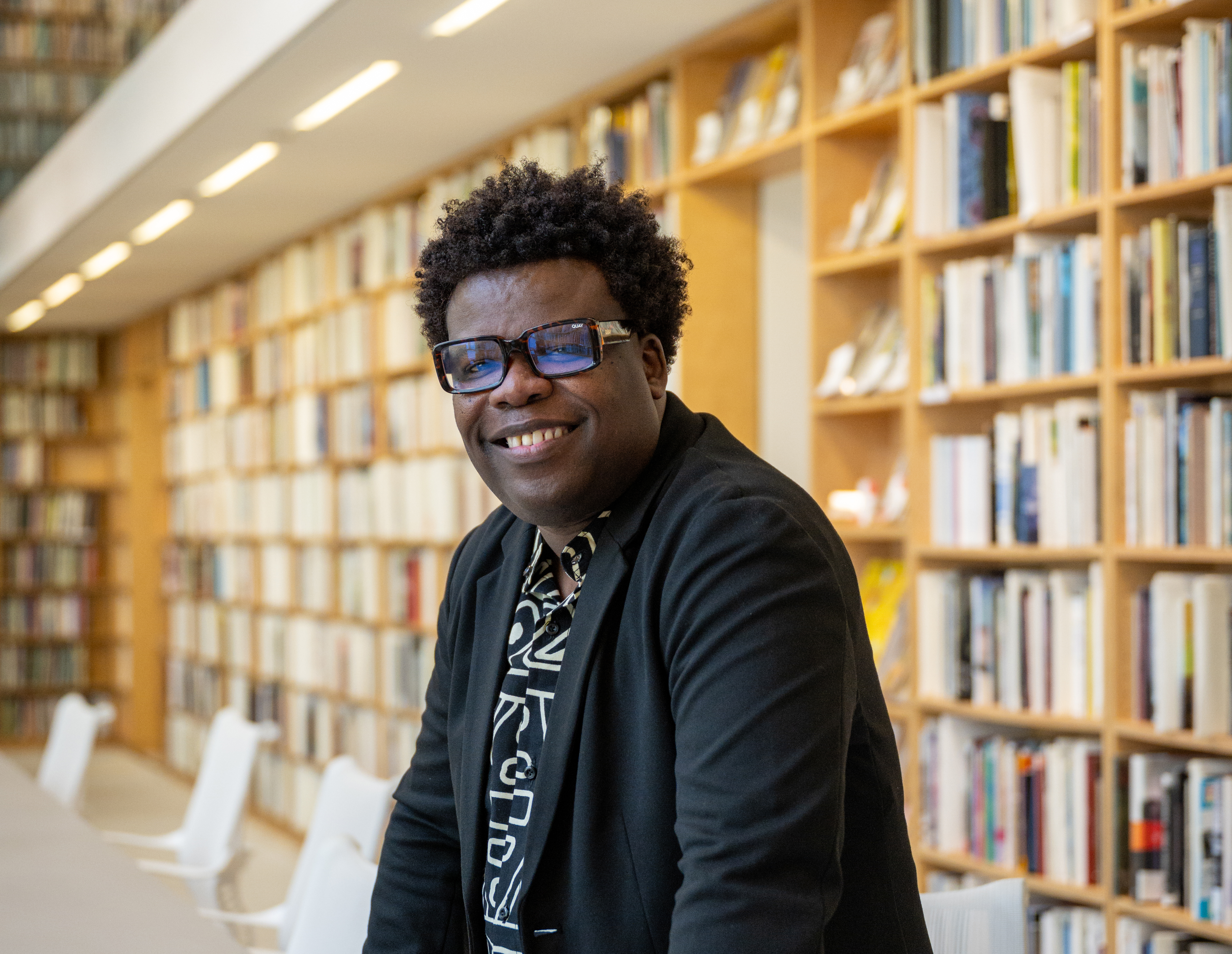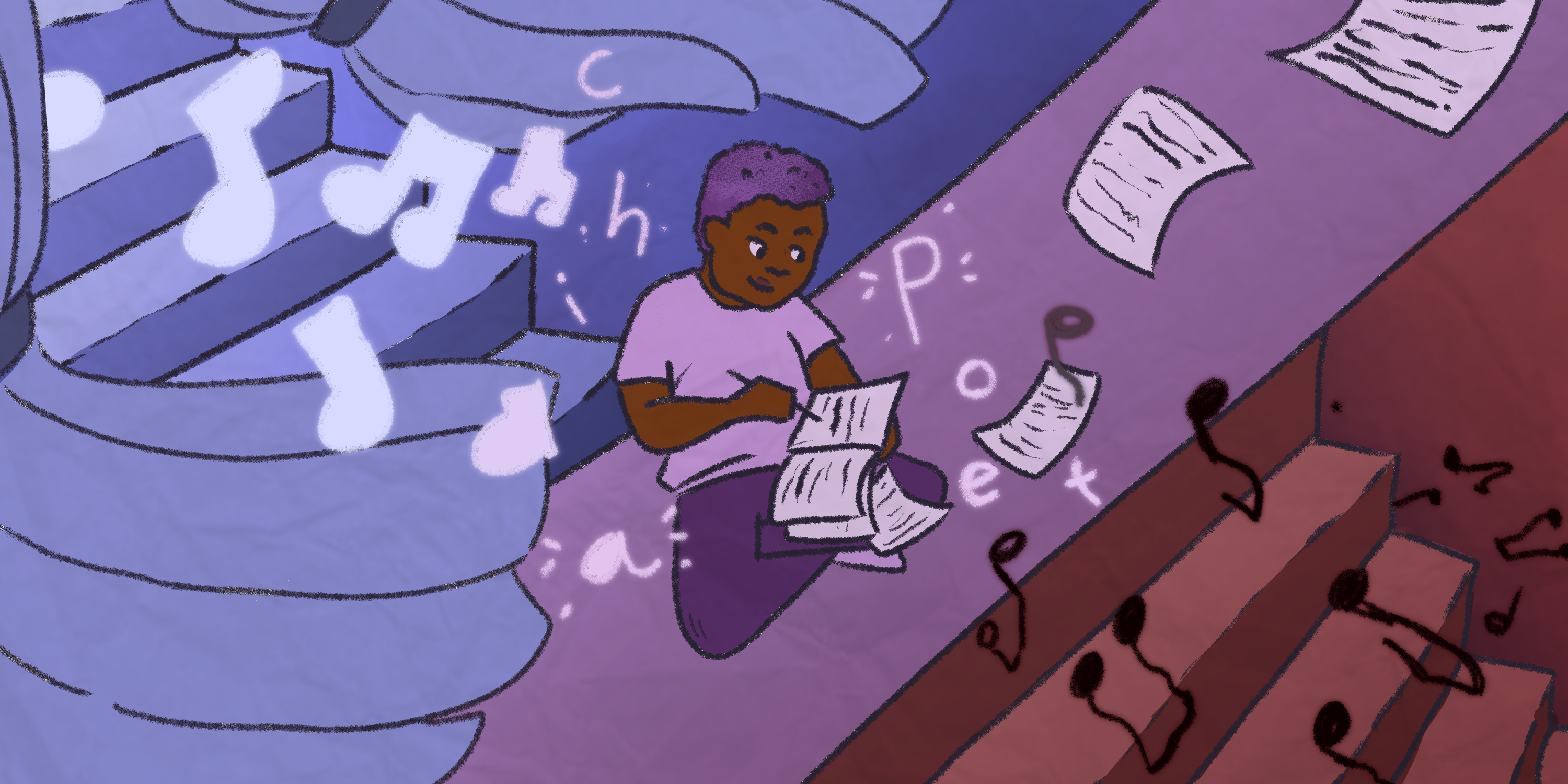Chicago has had songs, bands, and artists of all kinds write about Chicago, and now we have a poet laureate.
“I am the preacher who cusses and the blues man who prays” – avery r. young.
There’s music, rhythm and rhyme in his speech, in his bold, tongue-showing, rolling laughter. Then he’s serious again, deeply pondering the value of voice and its usefulness to his students.
Self-described as “the preacher who cusses and the blues man who prays,” 3Arts awardee and teaching artist avery r. young is Chicago’s first poet laureate. young spells his name in lowercase letters.
The Poetry Foundation, with the City of Chicago, Chicago Public Libraries and the Department of Cultural Affairs and Special Events (DCASE), appointed young in April. He was awarded $50,000.
DCASE Commissioner Erin Harkey said, “As the first Chicago Poet Laureate, avery will play an important role in helping to build and shape the program. We’re honored to support him, and experience what he creates and catalyzes through his tenure as Laureate.”
young is also “co-director of The Floating Museum, a Cave Canem fellow, leader for a New Chicago 2022 awardee, and performer with his band, de deacon board,” according to DCASE.
Lil Lillie, Tubman, Tchala and Sit Down Job, as well as his recent book, Neckbone, are just a few of his works.
“avery is a poet and artist who connects, engages, and inspires,” Harkey said. “avery will play an important role in helping to build and shape the program.”

avery r. young, Chicago’s first Poet Laureate, sits at the Poetry Foundation. Photo courtesy of Patrick L. Pyszka, City of Chicago
When asked about the monetary part of the award, young told 14 East, “the money is about being compensated for work that the city is going to ask [me] to do within the next two years.”
“The money at this point doesn’t really matter,” said young. “I know I will spend my tenureship looking for more money for other artists [to] give other artists and poets opportunities to create work.”
“I definitely have in my mind that more money has to be raised in order to do the level of programming that I want to do and set up even for the next poet laureate behind me,” he said.
young’s work embraces the deep-throated, passionate gospel call of the Black church, as evident in “Sit Down Job,” merging it with hip-hop beats and sultry, percussives that demand dim lighting.
Above and below the hallway in his childhood home, where he was shooed away from among the ladies to prevent him from listening to “grown folks” talk, he ended up positioned between the upstairs peals of his mother’s Mahalia Jackson, with the downstairs allure of soulful music that his father played.
young describes the coming together of the upstairs and downstairs music as a “Sunday morning juke joint, right there!”
He calls the space in between a “portal where it all kind of blends together, and you really don’t have to make a decision, because you realize it’s all from the same place.”
“Whatever Millie Jackson talking about we have Mahalia Jackson talking about. They using the same source to explain,” he said.
young’s poetry does not assign superiority to upstairs or downstairs but is able to reach out to each space without judgment.
“Yes, it has a different audience,” he said. “And yes, it has a different intent, but I don’t think one more saint or sinner.”
young explained that both singers “used their soul to tell a story.”
“Mahalia, she says, ‘How I Got Over.’” He compares Millie Jackson’s song, “If Loving You Is Wrong, I Don’t Wanna be Right!”
“Both of those things require their bodies to be fully committed to the language, and so committed to the language, another person will hear them and see them and feel exactly what they’re saying,” said young.
He is ready to work but is not making grand promises. young said making Chicago a better place through his laureateship is a “hard task.”
“I’m always wondering why people want artists to do that,” he laughed.
“It’s gonna take a lot of things to make Chicago a better place,” said young. “It’s gonna take policy, it’s gonna take poems, it’s gonna take people, it’s gonna take practice.”
“I’m willing to do my part, in the means which I know,” he said. “I know how to transform the space.”
“I know that most cultural and art spaces are diverse in ways that the neighborhoods in Chicago are not,” young said. “I know the power of art.”
Header illustration by Julia Hester




NO COMMENT